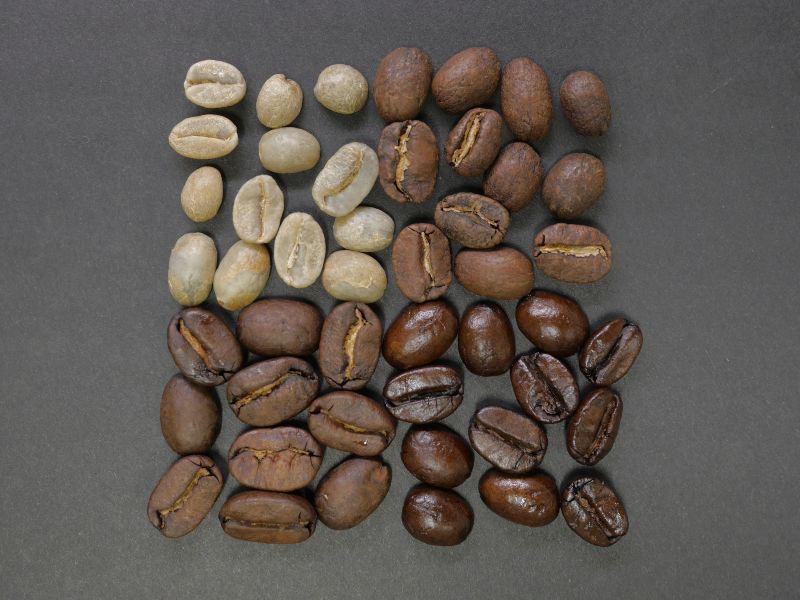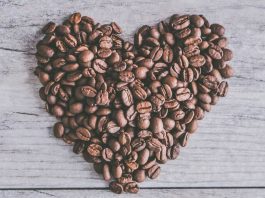The Ultimate Coffee Roasting Guide For Coffees That Help You Unwind. A coffee roasting machine will up your coffee game by a few notches. All you need to do is load it up with your favourite coffee beans and get roasting.
What’s better than drinking coffee that is exactly according to your taste? Wouldn’t it be like sipping coffee in heaven? This coffee roasting guide is what you are looking for to start roasting your own coffee at home.
It is effortless to grab a coffee in a Starbucks beside your home, but it can make a massive dent in your pocket. A much cheaper and more effective alternative would be to roast some coffee beans and enjoy the brew. Some minimal supplies are needed, along with coffee beans for this. Let us delve into the question of why we roast coffee beans.
One of the ways you can do that is by roasting coffee yourself in your safe haven – at the comfort of your home! By roasting coffee yourself at home, every cup you make has guaranteed freshness, rich aroma, and strong taste. Coffee roasting is an art that needs time and practice to perfect.
While you can always go to your favorite coffee shop to grab a coffee, it will make a huge dent in your pocket if that’s done on a daily basis. It’s much better if you make a cup of coffee yourself – from roasting the beans to brewing a delicious cup.
There are a few supplies needed for this purpose, along with the origin of green coffee beans. For this, you should understand the process from the beginning till the end so you can have an insight into how the roasting can affect the coffee flavors.
Before we get started, we first need to understand why we need to roast coffee.
Why Is Coffee Roasting Needed?

We all have seen coffee as a brown-colored powder in its ground form or as beans. However, initially, it is a small-sized red fruit going through plenty of stages to reach you and become a hot and delicious cup of liquid that you love.
First, it is processed so that the outer skin, inner skin, and pulp can be removed. Once everything is removed, we can see the inner seed. This inner seed, also known as coffee beans, is then dried.
Once it’s dried, then it becomes the green coffee bean. This green coffee bean gets shipped throughout the world so that it can be roasted.
Why Do We Have to Roast Coffee?
A coffee bean is much like a dry pinto bean. It can be stored for extended periods without losing its freshness. Once it undergoes the roasting process, it can still become fresh. If the coffee isn’t roasted, then it will become extremely acidic and bitter. This will make it undrinkable. Roasting gives the aroma and intense flavor to coffee.
Coffee Roasting Guide – Follow The Complete Process!
Drastic changes occur in green coffee during the process of roasting. When green coffee is roasted, moisture is drained out of the team. This causes the bean to dry and enlarge.
During the roasting process, some natural sugars are transformed into carbon dioxide gas, whereas others are converted into some flavors that formulate complex characters in coffee.
Once this process is complete, the green bean will form into a brown bean, and this brown bean is 18% lighter in weight and 50 to 100% larger in size.
You should know that after the completion of this roasting process, the coffee will start to “degas.” In less than a week or so, this will begin to lose its flavor and aroma.
Ten Different Stages of Roasting Coffee

Expert roasters have recognized ten different levels of roast that beans can go through, but they do not essentially should. It is up to you to reach the level you want.
Those are as follows:
- Green – In this stage, the beans maintain their pure green essence, although when they start heating.
- Yellow – The color of the beans becomes yellow, and the beans emit a grassy odour.
- Steam – Steam starts arising from the beans. Steam is water present inside the beans, which is evaporating.
- First Crack (Cinnamon Roast) – This is when the roasting process begins for real. The sugars present inside the beans start to caramelize. A cracking sound can be heard like a popping popcorn sound.
- City Roast – After the first crack, the beans reach the City Roast stage. This is the roast’s minimum level accepted for the brewing and grinding tastes of most people.
- City Plus Roast – The beans increase in size when additional caramelization of sugars, as well as the movement of oils, happens. This is the point when the beans reach City Plus Roast. This level is renowned and usual for a roast to use.
- Full City Roast – After the City Plus Roast comes the Full City Roast. This is a darker roast, and it takes the beans to the edge of a second cracking.
- Second Crack (Full City Plus Roast) – Following the Full City Roast, more forceful cracking happens, and beans enter the Full City Plus level. This roast has more coats of the intensity of flavor.
- Dark Roast (French Roast) – This is the topmost limit of roasting without ruining the good flavor of beans. At this stage, the smoke becomes pungent. Sugars are caramelized at the maximum without spoiling the flavor. The complete structure of beans breaks down.
- Burn – If by this time, you haven’t stopped roasting, the smell will become awful from pungent. This will burn the beans.
Dark Roast vs Light Roast
People have different preferences when they want their coffee roast to fall on the list stated above. A lot of people don’t know the names of their roasts. The four broad categories that separate these stages are Light, Medium, Medium Dark, and Dark Roast.
Differences in the Roasting Process for Light Roast and Dark Roast

There might not be differences between roasting Full City and Full City Plus since both are Dark Roasts. But there are most definitely distinctions in the roasting process for a City vs. a French Roast.
The internal temperature of beans rises when they are roasted. This also raises the temperature of the roaster. Some factors must be taken into consideration here.
Their internal temperature often distinguishes roasts at their removal time. Let’s have a detailed look at how hot the beans need to be for you to get your favorite roast.
Light Roast
If you are making light roast coffee, the temperature required is between 356-401 degrees Fahrenheit.
Other names for light roast are the half city, light city, and cinnamon roast. Despite their name, these roasts are formed when the first crack begins. During this point, the surface of the bean is dry, and it may be hard if removed before its first crack.
If you like higher acidity or perkier brews with a light body, you should pick this roast. This is relatively safer to make at home, requiring less time and lesser temperature.
Medium Roast
To make medium roasts such as City and City Plus, the temperature required is between 410-428 degrees Fahrenheit.
These beans still have a dry surface but are easily distinguished from green beans. During the mid to the finish of the first crack, this roast level shows up. Some people believe that anything in the middle of the first and second crack is a medium roast.
This has a mild acidity level and a fuller body and is more common and frequently used than light roasts. This is also because the temperature can be managed at home by most people.
Medium-Dark Roast
The medium-dark roast is somewhat in the larger grouping in regards to the number of roast distinctions drawn within it, such as Full City, Full City Plus, and often the Vienna Roast.
It is smaller in regards to the temperature window, which is between 437-446 degrees Fahrenheit. You will note spots of oil when the beans reach the 2nd crack. It’s where the roast starts creating traces of spice in it and a fuller body.
Dark Roast
Last but not least, for dark roast, the temperature must be kept below 482 degrees Fahrenheit. Espresso Roast, Italian Roast, and French Roast are all dark roasts.
You have to be careful with the temperature, or things can get even hazardous if the right apparatus is not used. These beans have an oily surface and are low in acidity. During the second crack, these beans are pulled out.
Anything that is at a higher temperature than this is burnt and will be undrinkable. So, for dark roast, you need to be extra careful.
The difference between Light, Medium, and Dark Roast Coffee is explained here.
Cooling the Beans and Removing Chaff
Coffee beans drop their outer skins during the process of roasting. They leave the Chaff behind – which is the shell.
To remove this Chaff, take two colanders and pour some hot beans into it when you are done with the roasting process.
Keep pouring the beans back and forth between the two colanders a couple of times so that the Chaff can be removed.
If you find it hard to do, then you need not worry as it won’t have any effect on the taste of your coffee so long as there is only a little amount of it left behind.
What Supplies Are Needed to Roast Coffee in the Comfort of Your Home?

You need the following supplies to roast coffee properly at home:
- Green Coffee – This depends on your geographical location. Based on that, it could be the hardest part of the process of roasting. For this, you would need to go to your nearest coffee shop or check in your area if any unroasted coffee beans are being sold.
- Roaster – While there are various types of roasters in the market, a popcorn maker can be useful for you to get the roasting job done. However, if you want to level up your roasting game, I would suggest going for a more profound coffee roaster, likes this inexpensive yet good coffee roaster, which has performed very well in various tests.
- Storage – Once you are done with roasting, you need a place where it can be stored until you consume it. To get the results, it should be airtight. Once a week has passed, it will start to lose its aroma and flavor regardless of how great your container is.
These are the things that you need to have to roast. When everything is in place, then it’s time to start with the process.
The beans should be heated between 370-540 degrees Fahrenheit for the process to be effective.
Things to Look Out for a While Roasting
When you are roasting, make sure that the beans are in motion constantly. This way, none of them will be burned. The roasting process tends to produce a bit of smoke, so your kitchen or the area you are roasting should be properly ventilated; otherwise, smoke can consume your house.
How to Roast Coffee Using a Roasting Machine?
In modern times, different types of roasting machines are available that can do the roasting for you.
The way these machines function is very much similar to a popcorn popper. They use rapidly moving hot air so that the beans can be roasted and kept agitated while they are being roasted.
This method is very easy and convenient. The roaster does the heavy lifting!
- Inside the roaster, place an appropriate quantity of coffee. Refer to the manual to ensure the appropriate amount.
- Then close the roaster properly and switch it on.
- Keep roasting the coffee until you get your desired color.
- Keep in mind that the longer the coffee is roasted, the darker the color will get, and it will become stronger in taste.
- Pour your coffee into a colander. Now mix it till it’s warm.
- The coffee should be kept at room temperature and away from the sun and moisture.
Roasting Coffee Beans Using a Stovetop Popcorn Maker
Before we had modern coffee roasters, people used to roast beans on a stovetop roaster. It is a pot, including a lid that can be easily agitated.
So, the question arises: What do you need to roast beans with a Stovetop Popcorn Popper?
- A Stovetop Popcorn Popper
- A gas or electric outdoor burner
- Coffee beans (unroasted)
- A laser thermometer (this is optional)
- A baking sheet
- A container (must be airtight)
Let us walk you through the steps in detail of roasting coffee beans with a Stovetop Popcorn Popper.
Setting up and Pre-heating the Popcorn Popper
The first step is to have unroasted green beans. You can get them at your nearest coffee shop. You can even ask for recommendations as to how dark the beans must be roasted. Don’t hesitate to experiment and learn how to roast as per your taste.
Once you get the beans, you set the burner, popper, and baking sheet. Then the Whirley Pop must be heated to about 400 degrees. You can check the temperature using a laser thermometer.
The estimated time required to pre-heat the popper is about 5 to 10 minutes. This will make it reach the required temperature range.
Adding Coffee Beans
The next step is to add the unroasted beans to the popper and start turning the handle. For the beans to roast evenly, keep moving the handle in a steady and even rhythm.
The heat will make the beans go through different stages of roasting. They will go from raw seeds to beans of delicacy as you want them to be. But you need to be attentive all the time as the difference between immaculately roasted and immaculately ruined beans is only a couple of minutes.
Roasting the Coffee Beans to Perfection
The next step is to roast the coffee beans to perfection – perfection is what and how you want your coffee beans to be. They will go from raw to grind and finally, brewable. You decide how roasted they should be. This is your decision. You need to be fully vigilant as few minutes of carelessness, you can destroy the perfectly roasted beans.
Constant attention will get you control over the flavor of your coffee as well. As mentioned above, there are ten stages of roasting beans in total. You can roast at any stage except for the tenth – it should be avoided at all costs.
Removing and Cooling
Once you have roasted according to your choice, then put the beans on a baking sheet. Move the sheet a little and let the beans cool in the natural air. Meanwhile, you can enjoy the aroma of the deliciousness of these beans.
Once they are cooled (depending on the roast’s darkness), they are ready to be stored.
Storing the Beans
When the beans have cooled down, put them in an airtight container. One of the good options is Mason Jars.
If your roast is Full City or even darker, then the cooling time must be of at least 12 hours, so the gasses can be evaporated before storing the beans.
The final step is to grind and brew a fantastic cup of Joe! The process will take about 20 minutes from the beginning till the end, and you will have a perfect home-roasted coffee experience.
Final Verdict
We hope that this article proved helpful for you to learn new tips and tricks about how to roast coffee beans at your home.
You know by now that is a very easy process and only requires practice to perfect it. You can get a custom-made coffee that is suited to your taste buds.
Experiment with different methods and roast the beans for various periods, making sure they are not burned during the experiment. Eventually, you will find a roast that is perfect for you!
You can also try adding various flavours and healthy tid bits to the coffee grounds while they are being roasted. This will give your coffee a unique flavour and also help you stay on track with your fitness goals. Adding some raw protein powder to the mix is a good example of the same.
Happy Roasting!




